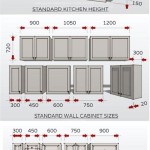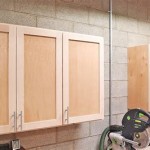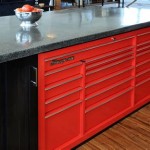Small Kitchen Cabinet Organizer: Maximizing Space and Efficiency
The modern kitchen often faces a common challenge: limited space. Particularly in apartments, condominiums, and older homes, kitchen cabinets tend to be compact, demanding careful consideration of storage solutions. Effective organization is paramount not only for aesthetic appeal but also for optimizing functionality and minimizing food waste. Small kitchen cabinet organizers present a diverse range of solutions designed to address this challenge by maximizing vertical space, improving accessibility, and fostering a more efficient cooking environment.
The implementation of well-chosen organizers can transform a cluttered kitchen into a streamlined, efficient workspace. This involves thoughtful selection of organizers based on individual storage needs, cabinet dimensions, and desired level of accessibility. Proper planning and execution are crucial to achieving optimal results. Understanding the various types of available organizers and their suitability for different purposes is the first step towards a well-organized kitchen.
Understanding the Types of Small Kitchen Cabinet Organizers
The market offers a wide array of small kitchen cabinet organizers, each designed to address specific storage needs and cabinet configurations. Understanding these different types allows for a more informed selection process, ensuring that the chosen organizers effectively address existing organizational challenges. Key categories of organizers include shelving units, drawer dividers, door-mounted racks, and specialized organizers for specific items like pots, pans, and lids.
Shelving Units: These organizers typically consist of tiered shelves or risers that effectively double or triple the available vertical space within a cabinet. Adjustable shelving units offer greater flexibility, accommodating items of varying heights. These are particularly useful for storing plates, bowls, canned goods, and spices. By creating multiple levels of storage, shelving units minimize wasted space and make it easier to access items at the back of the cabinet.
Drawer Dividers: Drawer dividers are essential for maintaining order within kitchen drawers. They prevent cutlery, utensils, and other small items from becoming jumbled together, making it easier to locate specific items quickly. Dividers are available in various materials, including plastic, bamboo, and metal, and can be adjustable or fixed. Installing drawer dividers optimizes the use of drawer space and promotes a more organized and efficient cooking process.
Door-Mounted Racks: Utilizing the often-overlooked space on the inside of cabinet doors can significantly increase storage capacity. Door-mounted racks are ideal for storing spices, cleaning supplies, pot lids, and other lightweight items. They are typically easy to install and do not require any permanent modifications to the cabinet structure. By freeing up shelf space, door-mounted racks contribute to a more organized and accessible kitchen.
Specialized Organizers: These organizers are designed for specific kitchen items, such as pots, pans, lids, and baking sheets. Pot and pan organizers, for example, often feature adjustable dividers that allow for customized storage configurations. Lid organizers keep lids neatly stacked and easily accessible. Baking sheet organizers prevent these items from becoming stacked horizontally, taking up valuable space. By utilizing specialized organizers, kitchens can achieve a higher degree of organization and efficiency.
Key Considerations When Choosing Organizers
Selecting the right small kitchen cabinet organizers requires careful consideration of several factors. These considerations include cabinet dimensions, the types of items being stored, the desired level of accessibility, and the overall aesthetic of the kitchen. Failure to account for these factors can lead to the selection of organizers that are ineffective or impractical.
Cabinet Dimensions: Accurate measurements of cabinet height, width, and depth are essential for selecting organizers that fit properly. Organizers that are too large will be impossible to install, while those that are too small may not effectively utilize the available space. It is advisable to measure the internal dimensions of the cabinet, taking into account any obstructions such as hinges or pipes. Purchasing adjustable organizers can offer a degree of flexibility, accommodating slight variations in cabinet dimensions.
Types of Items Being Stored: The specific items being stored will influence the type of organizers that are most appropriate. For example, storing spices requires different organizers than storing pots and pans. Consider the size, shape, and weight of the items to be stored when making a selection. Heavy items may require more robust organizers, while delicate items may require padded or cushioned organizers.
Desired Level of Accessibility: Accessibility refers to how easily items can be retrieved from the cabinet. Organizers that improve accessibility are crucial for frequently used items. Pull-out shelves, for example, make it easier to access items at the back of the cabinet without having to reach over or move other items. Lazy Susans are another effective way to improve accessibility in corner cabinets. Consider the frequency with which items are used when determining the desired level of accessibility.
Kitchen Aesthetic: While functionality is the primary concern, the aesthetic appearance of the organizers should also be considered. Choose organizers that complement the overall design of the kitchen and do not detract from its visual appeal. Organizers are available in various materials, colors, and styles, allowing for a degree of customization. Selecting organizers that are both functional and aesthetically pleasing can enhance the overall kitchen experience.
Implementing and Maintaining Organized Cabinets
Once the appropriate organizers have been selected, proper implementation and maintenance are crucial for maximizing their effectiveness and longevity. This involves a systematic approach to decluttering, installing the organizers, and maintaining the organized space. Regular cleaning and reassessment of storage needs are essential for maintaining a well-organized kitchen.
Decluttering: Before installing any organizers, it is essential to declutter the existing cabinets. This involves removing all items from the cabinets and discarding or donating any items that are no longer needed or used. This process creates a clean slate and allows for a more efficient organization process. It is also an opportunity to identify any potential storage challenges or opportunities.
Installation: Follow the manufacturer's instructions carefully when installing the organizers. Most organizers are relatively easy to install, requiring only basic tools. Ensure that the organizers are securely mounted and do not wobble or shift. Consider using adhesive strips or screws to secure organizers to the cabinet walls or shelves. If unsure about the installation process, consult a professional.
Maintaining Organization: Maintaining an organized kitchen requires ongoing effort. Regularly assess the contents of the cabinets and remove any items that are no longer needed. Reorganize the cabinets as needed to accommodate changes in storage needs. Establish a system for putting items back in their designated locations after use. Regular cleaning of the cabinets and organizers will also help to prevent the buildup of dirt and grime.
Regular Cleaning: Regularly cleaning the cabinets and organizers prevents the accumulation of dust, crumbs, and spills. This helps to maintain a clean and hygienic cooking environment. Use a mild detergent and warm water to clean the surfaces of the cabinets and organizers. Avoid using harsh chemicals or abrasive cleaners, as these can damage the surfaces. Regular cleaning will also help to extend the lifespan of the organizers.
Reassessment of Storage Needs: Periodically reassess storage needs and adjust the organization system accordingly. Changes in lifestyle, cooking habits, or family size may necessitate changes in the way kitchen cabinets are organized. Consider reconfiguring existing organizers or adding new organizers to address evolving storage needs. Flexibility and adaptability are key to maintaining a well-organized kitchen over time.
By carefully selecting and implementing small kitchen cabinet organizers, individuals can transform their kitchens into more efficient and enjoyable spaces. A well-organized kitchen not only improves functionality but also reduces stress and promotes a more positive cooking experience. The principles of decluttering, thoughtful selection, and ongoing maintenance are essential for achieving and maintaining a truly organized kitchen.
Ultimately, the goal of small kitchen cabinet organization is to create a system that maximizes space, improves accessibility, and promotes a more efficient cooking process. By investing in the right organizers and implementing effective strategies, individuals can overcome the challenges of limited kitchen space and create a functional and aesthetically pleasing culinary environment.

10 Ways To Maximize Cabinet Space In A Small Kitchen
:strip_icc()/NEATLITTLENEST1-f37d50a35cbe4561a7e9be0a0221506f.jpg?strip=all)
20 Best Small Pantry Organization Ideas You Have To Try

How To Organize A Small Kitchen Abby Organizes

Small Kitchen Organization Ideas 2024 Er Friendly Space S

How To Organize A Small Kitchen Abby Organizes

Small Kitchen Cabinet Organization Young House Love

Small Kitchen Storage Ideas Fat Change

Learn 31 Best Ways To Organize Your Small Kitchen Clutter Free Heart Of The Home Sustain Life Journal

A Guide To Small Kitchen Organization Cook Craft Love

Easy Diy Kitchen Cabinet Organization Ideas Angela Marie Made
Related Posts








